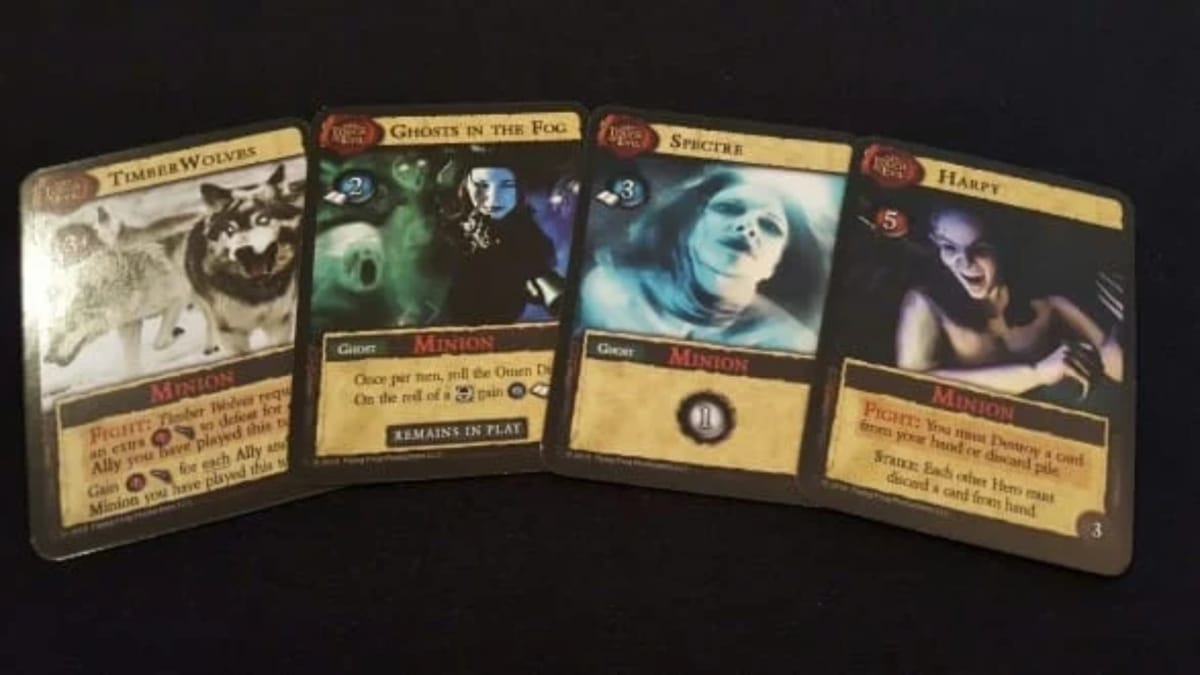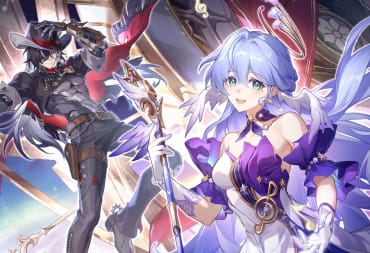Deck-building games come in all shapes and sizes. The core mechanics of deck building have spread throughout the board game world and there are deck-building games out there to fit just about any taste, thematic preference, or play style.
Deck building has become so widespread because it's a joy to constantly add cards to your deck, ever-expanding that deck's power and potential. While not every deck-building game is a hit, it's a genre that I, and many other people, quite enjoy, and there are a ton of very fun options on the market, including Dark Gothic.

Dark Gothic is semi-cooperative and almost instantly stands out from the crowd due to its unique art direction. Dark Gothic uses a mixture of hand drawn art and cheesy photographs of people in costume that lend the game an air of campiness. While this initially may put some people off, myself included, in practice it actually works in the game's benefit. As the name Dark Gothic implies, the game's theme is horror, although it is obviously offset by the lighter tone of the art direction. This is a great choice, because the weight of the gameplay wouldn't really suit a heavy horror game and instead fits perfectly with the campy photographs.

Dark Gothic's gameplay is fairly standard for a center line deck building game, although it does have a few fun twists, including the fact that each player is randomly dealt a character card at the beginning of the game. These characters determine which cards will be in each player's starting deck and also give each player a special power to use throughout the game. This asymmetry is fun and keeps the game fresh between plays.

Dark Gothic also takes a semi-cooperative approach to gameplay, wherein players are ultimately competing to score the most points but must work together to defeat a series of boss monsters. If the players fail to successfully defeat the boss monsters before the Darkness grows too strong, then all players lose the game. Players can attempt to trip each other up, as there are cards that allow players to negatively effect one another, but they still have to keep focus on the boss monsters and, while there isn't any direct way to help each other, the game encourages players to work towards this common goal.

Fans of deck building games will find a lot to like in Dark Gothic. As with other deck building games, it's fun to add cards of ever increasing power and utility to your deck and, in turn, be able to acquire even more powerful cards and fight and destroy even more difficult Minions or boss monsters. There's an ever present sense of satisfaction as the game progresses, and players feel as if they are constantly moving forward and gaining strength. The balance between this sense of progress and the ever present need to defeat the boss monsters before the Darkness grows too large and ends the game gives Dark Gothic a fun layer of tension.

There is a lot to like in Dark Gothic and it does enough differently to stand on its own in a crowded genre. The asymmetry of the character cards combined with the random boss monster distribution each game mean that there is a lot to see and do in the game and keeps the game fresh across numerous plays.

A note on full cooperative play: Dark Gothic does feature a full cooperative variant, although it isn't quite as good as the default, semi-cooperative mode. Minion cards are so easy to get rid of when playing fully cooperatively that a lot of tension is lost when played this way. While a nice option to have, it just doesn't quite have the same je ne sais quoi as the standard mode.
A note on “chrome”: Dark Gothic's cards are good quality and easy to shuffle and play with. The cards are glossy, but, after numerous games, don't show any signs of chipping or scuffing unlike some other games with glossy cards have shown. The art in Dark Gothic is a mix between real photographs and drawn art. The photographs are campy and cheesy, but the more I played the game, the more I enjoyed the campiness and the way that it relates to the theme of the game. It feels like there should be a low budget BBC show that ties in with the story of the game, and the more I play Dark Gothic, the more I wish there actually was one.
The Bottom Line
Dark Gothic is a ton of fun. It puts just the right amount of spin on the deck building genre that it feels unique and entertaining, even while using mechanics that have become a dime a dozen in board gaming. Initially, I was unsure of the art style and direction of the game, but the more I play it the more fond of it I become. Dark Gothic is a worthy purchase for anyone who enjoys, or would like to try out, deck building games.
Get this game if:
You enjoy deck building games.
You enjoy semi-cooperative games.
You like the campy horror theme.
Avoid this game if:
You dislike deck building games.
You prefer fully cooperative or directly competitive games.
The copy of Dark Gothic used for this review was provided by Flying Frog Productions.
Review Summary
Have a tip, or want to point out something we missed? Leave a Comment or e-mail us at tips@techraptor.net













